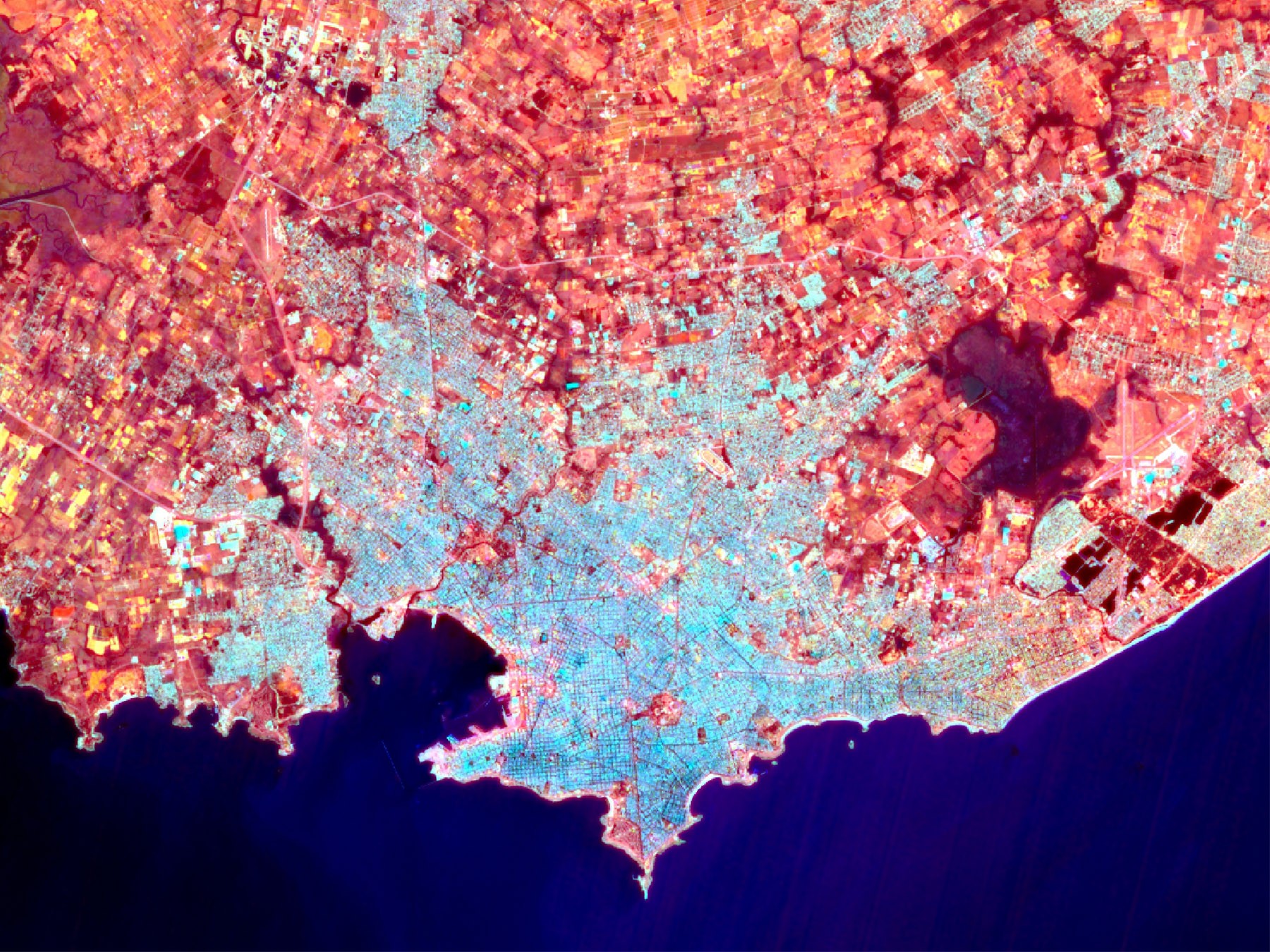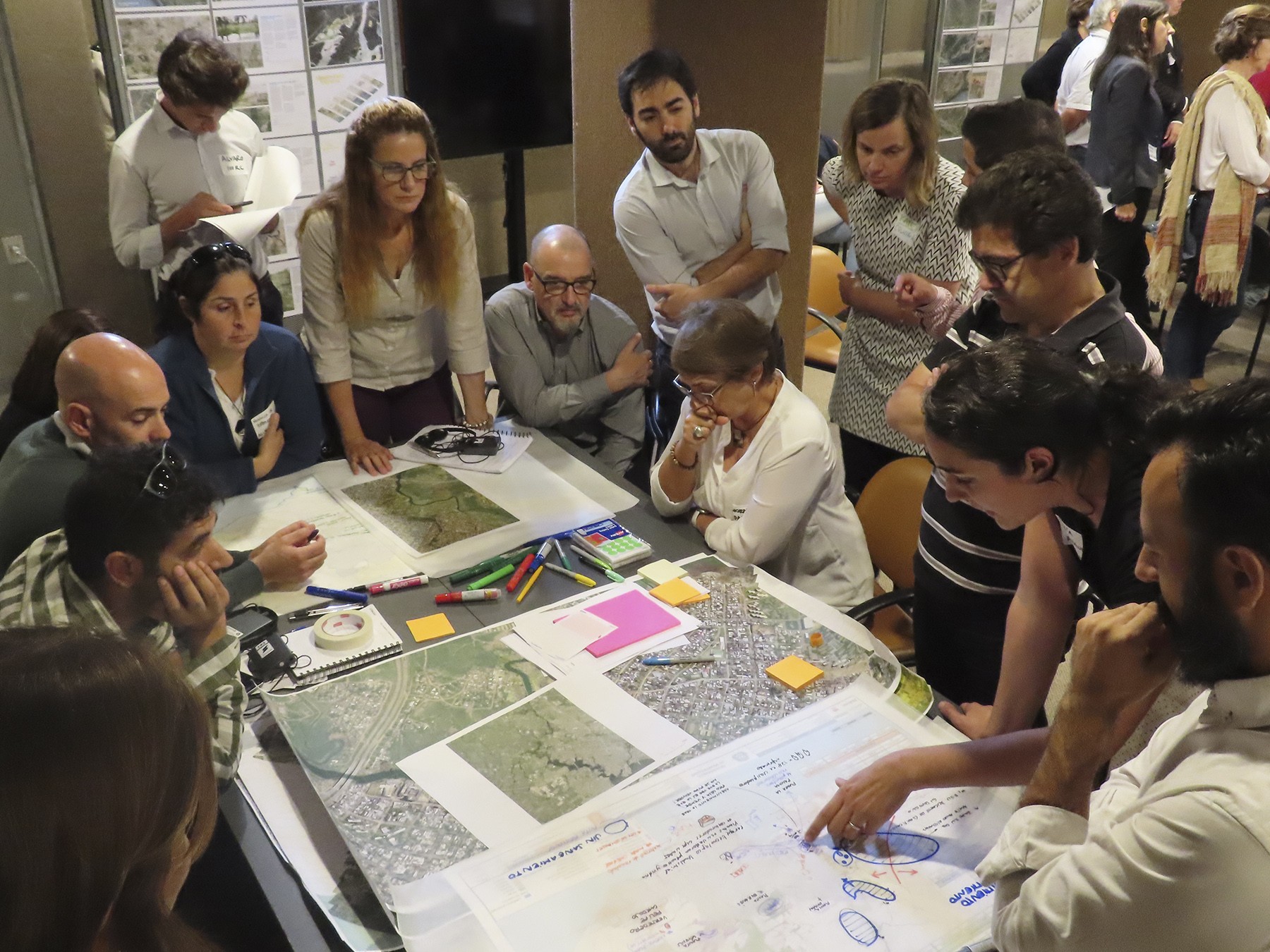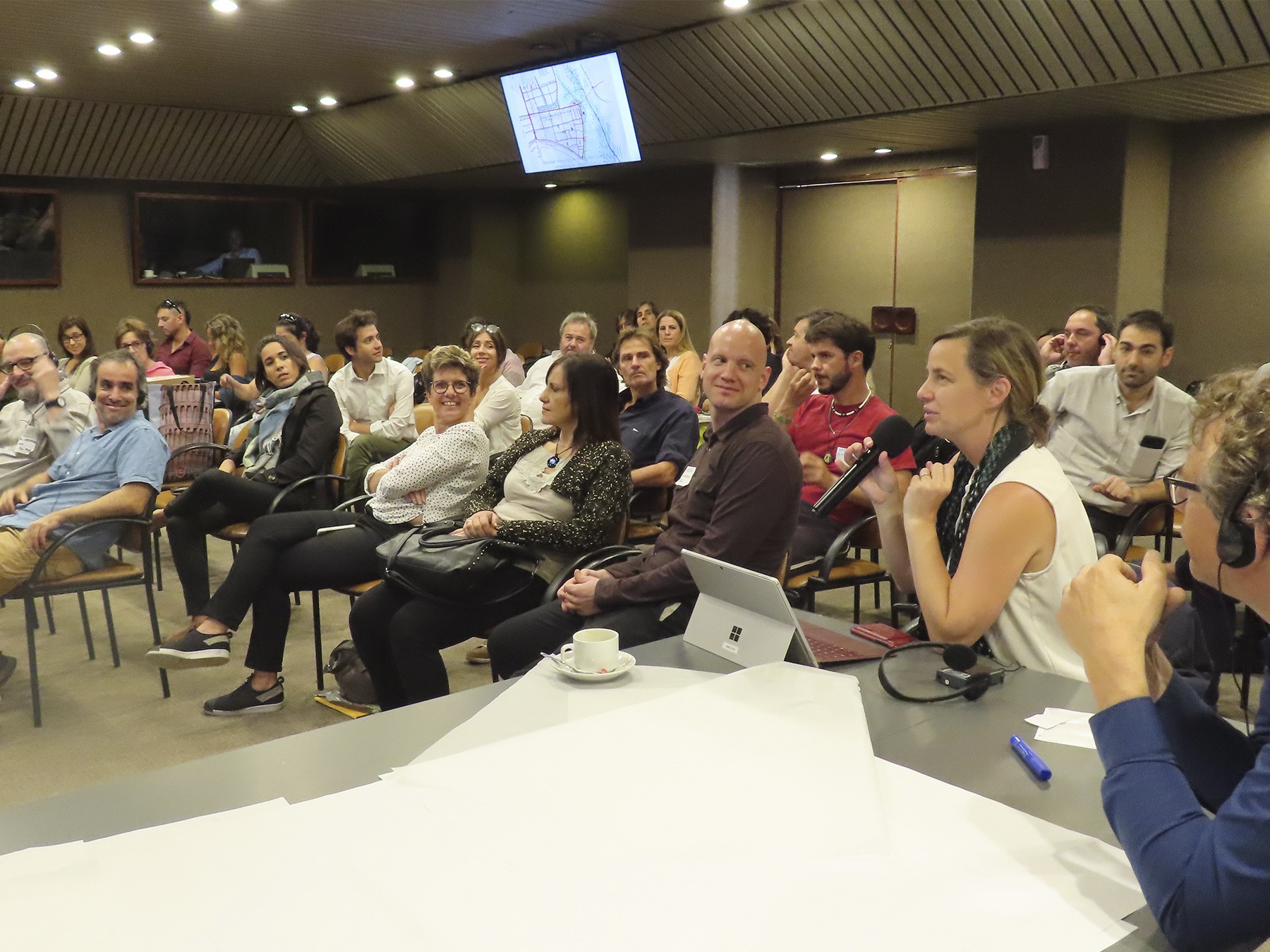How can integrated scenario planning help the City realize the ecological and social potential of the Pantanoso Stream Basin?
Image Carousel with 12 slides
A carousel is a rotating set of images. Use the previous and next buttons to change the displayed slide
-
Slide 1: Montevideo, Uruguay, Landsat 8 - Urbanization
-
Slide 2: Government housing project in Montevideo
-
Slide 3: Pantanoso creek reaching the Rio de la Plata
-
Slide 4: ""
-
Slide 5: ""
-
Slide 6: ""
-
Slide 7: Pantanoso wetland encroachment
-
Slide 8: ""
-
Slide 9: ""
-
Slide 10: Surrounding inhabited areas in the lower Pantanoso Basin
-
Slide 11: UdR, Intendencia de Montevideo and 100RC team on site
-
Slide 12: ""

Montevideo, Uruguay, Landsat 8 - Urbanization
Government housing project in Montevideo

Pantanoso creek reaching the Rio de la Plata




Pantanoso wetland encroachment


Surrounding inhabited areas in the lower Pantanoso Basin
UdR, Intendencia de Montevideo and 100RC team on site

The Uruguayan capital of Montevideo has accomplished much in recent years. Poverty has declined from 26% in 2006 to 8.3% in 2016; however, success is rarely evenly distributed. The 95,000 people who live in and around wetlands of the Patanoso Basin are still plagued with poverty, poorly constructed housing, regular flooding, lack of access to jobs and services, and a degraded environment from decades of industrial contamination and ongoing illegal dumping. The City has put forth a vision that the Pantanoso River Basin can become an attractive place for new investment while the social cohesion of the existing community can be strengthened. The City’s plan calls for the relocation of flood-vulnerable households and wetland restoration, but this requires deep and sustained community engagement and creative design solutions.
The Resilience Accelerator Workshop sought to bring the City’s vision to the ground by exploring specific design interventions for three neighborhoods. Building from the experience and observations of global experts from Brazil, the Netherlands and the US, the Accelerator workshop participants developed strategies for how to deal with ongoing illegal dumping and remediate toxic soil, how to reestablish a thriving wetland ecology, and how to stitch the existing urban fabric into a future park with a “rambla,” a public walkway that would connect to Montevideo’s other thriving waterfront neighborhoods. Together we also charted a path to involve the whole community in this transformation with organized wetland plantings, educational programs and cleanups. Participants also made suggestions for how the city could leverage the park investment to ensure that relocated communities do not spiral back into poverty. This will take further investment in community facilities, transportation, and other services; as well as training in jobs in ecological stewardship.

PUBLICATION
CRCL TEAM
Kate Orff
Thad Pawlowski
Walter Baethgen
PARTNERS
100 Resilient Cities
Intendencia de Montevideo
Universidad de la República, Uruguay

